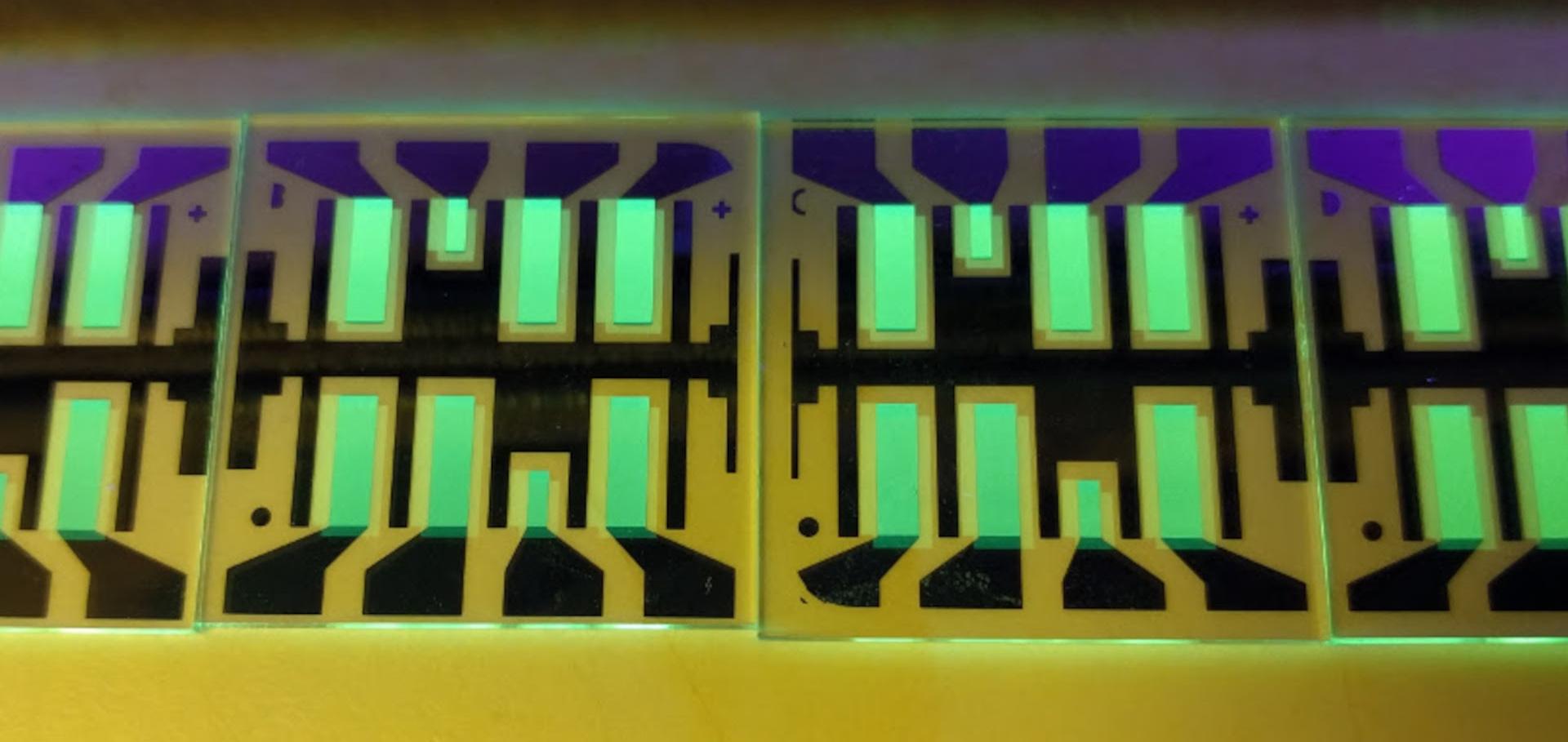Dominating recombination mechanisms in organic solar cells based on ZnPc and C60
Applied Physics Letters 102:16 (2013)
Abstract:
We investigate the dominating recombination mechanisms in bulk heterojunction solar cells, using a blend of ZnPc and C as model system. Analyzing the open-circuit voltage (V oc) as a function of illumination intensity, we find that trap-assisted recombination dominates for low light intensities, whereas at 1 sun, direct/bimolecular recombination becomes important. The recombination parameters are not significantly influenced by the blend mixing ratio and are also valid for injected charges. By changing the hole transport layer, recombination at the contact is separately identified as further mechanism reducing V oc at higher light intensities. © 2013 AIP Publishing LLC.Trap states in ZnPc:C60 small-molecule organic solar cells
Physical Review B - Condensed Matter and Materials Physics 87:4 (2013)
Abstract:
Trap states are known to be one of the key parameters limiting charge transport in organic semiconductors and hence the performance of organic solar cells. Here, small-molecule organic solar cells based on a bulk heterojunction between zinc-phtalocyanine (ZnPc) and the fullerene C60 are characterized according to their trapping nature by noninvasive methods and under ambient conditions. We show how impedance spectroscopy, applied to systematically varied device structures, reveals the trap localization as well as its occupation mechanisms. Further insight is given from investigations of different device working points and illumination intensities. Thus, we find the traps to be bulk states in the active layer with an electron-trapping nature. They can be described by a Gaussian energy distribution of 55 meV width, centered at 0.46 eV below the electron transport level and with a concentration of 3.5 × 1016 cm-3. Moreover, the trap states act as recombination centers in the presence of injected or photogenerated charge carriers. The results are confirmed by electrical simulations. © 2013 American Physical Society.Increasing organic solar cell efficiency with polymer interlayers
Physical Chemistry Chemical Physics Royal Society of Chemistry (RSC) 15:3 (2013) 764-769
Doping of organic Semiconductors
Chapter in Physics of Organic Semiconductors, Wiley-VCH (2013) 14
Diindenoperylene derivatives: A model to investigate the path from molecular structure via morphology to solar cell performance
Organic Electronics 14:7 (2013) 1704-1714


